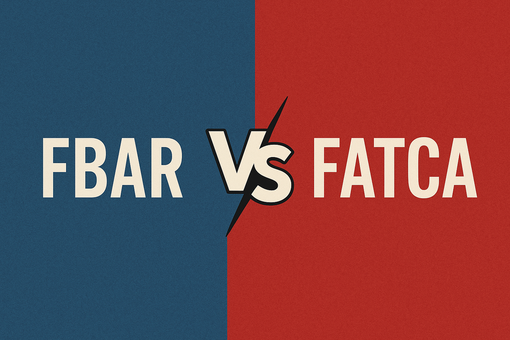Roth IRA vs. traditional IRA: Which retirement account is right for you?
Deciding between a Roth IRA and a Traditional IRA can feel a bit like trying to predict the future: Do you want tax savings now or tax savings later?
Both retirement accounts offer great benefits, but they work differently, particularly when it comes to tax advantages.
We will break down the differences between Roth and Traditional IRAs, help you decide which one best suits your financial goals, and share some pro tax tips along the way.
Let’s dive in!
What is an IRA?
An Individual Retirement Account (IRA) is a type of savings account designed for retirement. It offers tax advantages to help you grow your wealth over the long term.
There are two main types: Traditional IRAs and Roth IRAs.
Both have their own unique tax benefits, but choosing between them depends on a few factors: your current income, expected tax bracket in retirement, and personal financial goals.
Key differences between Roth and traditional IRA
The primary difference between a Roth and Traditional IRA is how and when they offer tax advantages.
Here’s a quick comparison:
| Feature | Traditional IRA | Roth IRA |
|---|---|---|
| 1. Tax treatment | Contributions may be tax-deductible | Contributions are made with after-tax dollars |
| 2. Withdrawals in retirement | Taxed as ordinary income | Tax-free if qualified |
| 3. Eligibility | No income limits but contributions may be non-deductible based on income and workplace retirement plans | Income limits apply |
| 4. Required Minimum Distributions (RMDs) | RMDs start at age 73 | No RMDs |
| 5. Early withdrawal penalty | 10% penalty on early withdrawals | Contributions can be withdrawn penalty-free anytime |
How traditional IRAs work
Contributions and tax deductions
With a Traditional IRA, your contributions may be tax-deductible, which can lower your taxable income for the year you make them.
However, deductibility depends on two things: your income and whether you or your spouse are covered by a workplace retirement plan, such as a 401(k).
Deductibility example:
- If you’re single with a workplace plan and earn under $68,000, you can fully deduct your Traditional IRA contributions. If you earn more than $78,000, the deduction starts phasing out.
Pro tip. If your income is just above the deductible threshold, consider contributing to your 401(k) to lower your adjusted gross income (AGI) enough to qualify for the IRA deduction.
Withdrawals in retirement
Traditional IRAs offer tax deferral, so you won’t pay taxes on your contributions or earnings until you start withdrawing in retirement.
At that point, withdrawals are taxed as ordinary income.
Required minimum distributions (RMDs)
When you reach age 73, the IRS mandates that you begin taking minimum distributions from your Traditional IRA each year.
These RMDs are taxable, so be prepared for those distributions to increase your taxable income in retirement. (In other words, Uncle Sam won’t wait forever!)
How Roth IRAs work
Contributions and income limits
Roth IRA contributions are made with after-tax dollars, which means you don’t get a tax deduction for them.
However, the trade-off is that qualified withdrawals in retirement are tax-free. This can be especially beneficial if you expect to be in a higher tax bracket down the road.
Income limits for Roth IRAs
To contribute to a Roth IRA, your modified adjusted gross income (MAGI) needs to be below certain thresholds.
In 2024:
- Single filers: Maximum contribution limit phases out between $138,000 and $153,000.
- Married filing jointly: Phases out between $218,000 and $228,000.
Withdrawals in retirement
The beauty of a Roth IRA is that qualified withdrawals – meaning those taken after age 59½ and after holding the account for at least five years – are tax-free.
This can make a Roth IRA particularly valuable if you anticipate being in a high tax bracket in retirement.
No required minimum distributions (RMDs)
Unlike Traditional IRAs, Roth IRAs don’t require RMDs during the account owner’s lifetime.
This can be a huge plus if you want to leave the account to your heirs or if you don’t need to rely on that money in retirement.
Tax advantages of Roth and traditional IRAs
Both Roth and Traditional IRAs provide significant tax benefits, making them powerful tools for retirement savings.
However, each type of IRA offers tax advantages at different stages, depending on when you want to pay taxes – now or later.
Tax advantages of a traditional IRA
-
Immediate tax deductions. Traditional IRA contributions may be deductible in the year you make them, which can reduce your current taxable income.
This deduction can be particularly valuable if you’re in a high tax bracket, as it helps lower your annual tax bill right away. -
Tax-deferred growth. Any investment earnings within a Traditional IRA – such as interest, dividends, or capital gains – grow tax-deferred.
This means you won’t pay taxes on these earnings each year, allowing your retirement funds to grow more quickly over time. -
Potential for lower tax rates in retirement. The theory behind deferring taxes is that you may be in a lower tax bracket during retirement than during your peak earning years.
By postponing taxes until you make withdrawals, you might pay a lower effective tax rate on these funds. - Additional tax benefits for high-income earners. For those with higher incomes, the ability to make deductible contributions to a Traditional IRA offers a valuable tax shelter, especially if your income limits you from contributing to a Roth IRA.
“Think of a Traditional IRA as a tax break for your working years: you get immediate tax relief, and the funds grow without annual tax impacts until you’re ready to use them in retirement.” - Reid Kopald, EA
Tax advantages of a Roth IRA
-
Tax-free growth and withdrawals. With a Roth IRA, your contributions are made with after-tax dollars, but the big benefit comes later: investment earnings within the Roth IRA grow tax-free, and withdrawals in retirement are also tax-free.
This can be especially advantageous if you expect to be in a higher tax bracket in retirement. -
No required minimum distributions (RMDs). Unlike Traditional IRAs, Roth IRAs do not require you to take minimum distributions starting at age 73.
This means you can leave your Roth IRA untouched, letting it grow tax-free for as long as you wish – great for estate planning and leaving a tax-free legacy for heirs. - Tax diversification. Roth IRAs provide tax-free income in retirement, which can be invaluable if your other retirement accounts are tax-deferred. Having both tax-deferred and tax-free income sources can give you greater control over your tax liability in retirement.
-
Flexibility with early withdrawals. Unlike a Traditional IRA, contributions to a Roth IRA can be withdrawn at any time, tax-free and penalty-free, making it a flexible option.
However, keep in mind that withdrawing earnings before age 59½ and before holding the account for five years may result in taxes and penalties on those earnings.
“A Roth IRA is like a tax gift for your future self: while you pay taxes now, you enjoy tax-free growth and withdrawals later, which can make a huge difference in retirement.” - Reid Kopald, EA
Which IRA offers more tax benefits?
Both types of IRAs offer tax advantages, but each is beneficial in different scenarios:
- If you’re in a higher tax bracket today and want to lower your current tax bill, a Traditional IRA’s tax deductions might be more appealing.
- If you expect to be in a higher tax bracket in the future, a Roth IRA’s tax-free withdrawals could maximize your long-term savings.
Roth IRA vs. Traditional IRA: which is better for you?
Choosing between a Roth and a Traditional IRA really depends on your personal situation.
Here are some scenarios that might help guide your decision:
| Choose a Traditional IRA if: | Choose a Roth IRA if: |
|---|---|
|
1. You want a tax break now. A Traditional IRA may be beneficial if you’re in a high tax bracket and want to lower your current taxable income. |
1. You’re in a lower tax bracket today. If you’re just starting your career or expect your income to rise, paying taxes on your contributions now can save you from higher taxes later. |
|
2. You expect to be in a lower tax bracket in retirement. If you’ll likely earn less in retirement, you may prefer to delay paying taxes until you’re in a lower bracket. |
2. You want tax-free income in retirement. Roth IRAs let you avoid taxes on withdrawals down the line, making them a great tool for tax diversification. |
|
3. You need flexibility for deductible contributions. Traditional IRAs have no income limit for making deductible contributions (though deductibility phases out if covered by a workplace retirement plan). This makes them an option for higher earners who may not qualify for Roth IRA contributions. |
3. You don’t want RMDs. With no required minimum distributions, Roth IRAs let you keep your money invested for as long as you like. |
Pro tip. If you’re unsure of your future tax bracket, consider contributing to both types of accounts to benefit from a mix of tax-deferred and tax-free income.
Converting from a traditional IRA to a Roth IRA
A Roth conversion allows you to transfer money from a Traditional IRA to a Roth IRA, effectively paying taxes now to enjoy tax-free growth in the future.
This can be advantageous if you expect your tax rate to increase or if you’re in a lower tax bracket temporarily.
Things to know before converting:
- Tax implications: The amount converted is added to your taxable income for the year, which could push you into a higher tax bracket.
- Timing: Consider spreading conversions over multiple years to minimize the tax impact.
The bottom line
Both Roth and Traditional IRAs offer valuable retirement savings opportunities, but the right choice depends on your individual tax situation, retirement goals, and income level.
As a rule of thumb:
- Go Traditional if you’re seeking an immediate tax break and expect to be in a lower tax bracket in retirement.
- Go Roth if you’re okay with paying taxes now in exchange for tax-free income in the future – and if you don’t want RMDs.
Or, if you’re feeling indecisive (and have the funds), contribute to both and get the best of both worlds. Retirement planning is about flexibility, so having a mix of tax-deferred and tax-free assets can be a smart strategy.
Taxes are complicated
Get peace of mind with TFX
FAQ
Yes, you can contribute to both types in the same year, but the combined total must not exceed the annual contribution limit ($6,500 for 2024, or $7,500 if you’re 50 or older).
If your income is too high, you can consider a backdoor Roth IRA strategy, which involves making a nondeductible contribution to a Traditional IRA and then converting it to a Roth IRA.
For both Roth and Traditional IRAs, withdrawals before age 59 generally incur a 10% penalty on earnings (but not on Roth contributions). Exceptions exist, such as for first-time homebuyers, certain medical expenses, and more.



